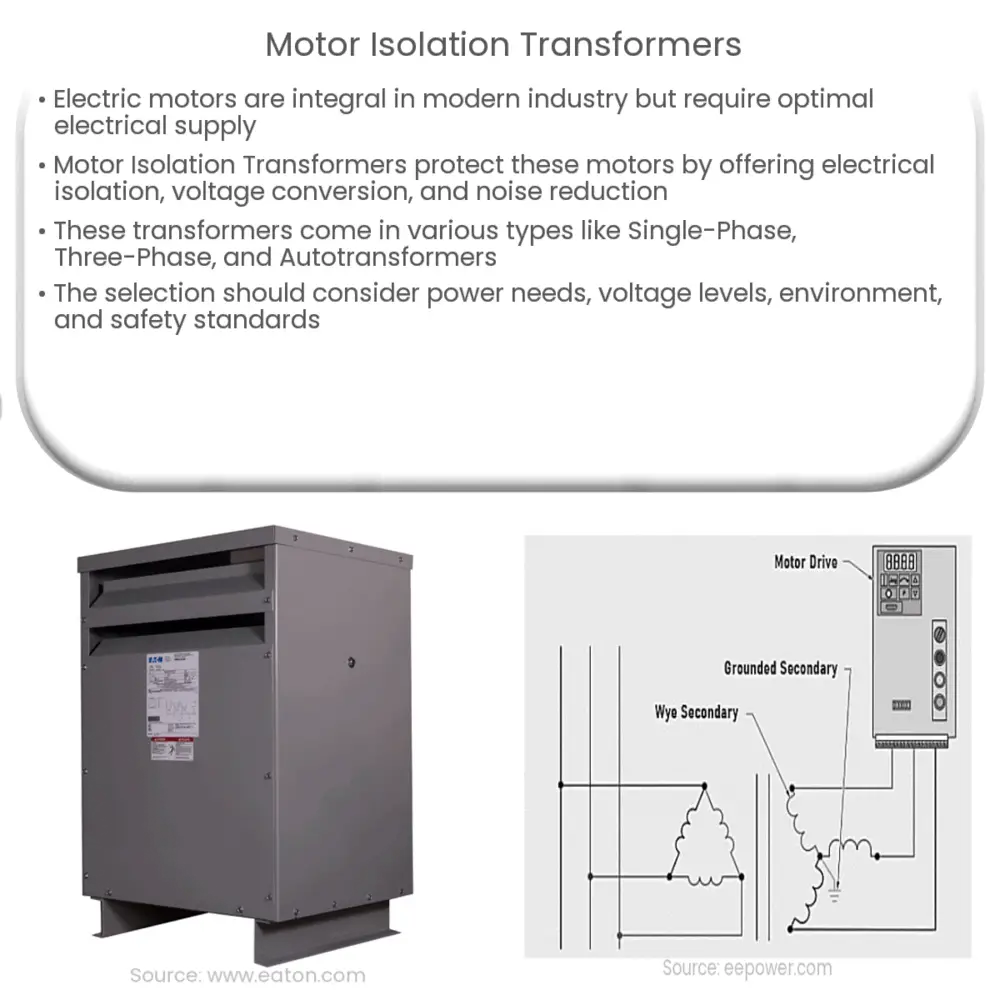Explore the role and importance of Motor Isolation Transformers, their types, selection criteria, and how they enhance the longevity of electric motors.

Introduction to Motor Isolation Transformers
Electric motors are a vital part of modern industrial applications. However, these machines often operate in environments where the electrical supply may not be ideal. This is where Motor Isolation Transformers come into play, providing a layer of protection to these critical pieces of equipment. Before delving into the details, let’s first understand what a transformer is.
What is a Transformer?
A transformer is an electrical device that transfers electrical energy from one circuit to another through the process of electromagnetic induction. It consists of two or more coils of wire, called ‘windings’. Each winding is linked by a magnetic core.
Motor Isolation Transformers Defined
A motor isolation transformer is a specific type of transformer designed to isolate an electric motor from the power source. It ensures that the motor is protected from potential harm caused by issues like voltage spikes, surges, and electrical noise.
Role and Importance of Motor Isolation Transformers
The primary role of a motor isolation transformer is to provide a barrier between the power source and the motor. In doing so, it offers three key benefits:
- Electrical Isolation: It provides electrical isolation, ensuring that any faults in the power supply don’t directly impact the motor. This makes it a critical component for maintaining the health and longevity of electrical motors.
- Voltage Conversion: Another role of these transformers is to convert voltages. Depending on the design, they can step up or step down the supply voltage to match the motor’s operational voltage.
- Noise Reduction: Electrical noise can be a major issue, particularly in industrial environments with numerous electrical devices. Motor isolation transformers help reduce this noise, thereby improving the motor’s performance and durability.
Types of Motor Isolation Transformers
Motor isolation transformers come in various types, each suited to a specific application or environment. The three primary types are:
- Single-Phase Transformers: These are used in applications where the power supply is single-phase. They are typically used in residential and some light industrial applications.
- Three-Phase Transformers: These are designed for use with three-phase power supplies, which are commonly found in heavy industrial applications.
- Autotransformers: Autotransformers have a single winding that serves as both the primary and secondary winding. They offer a compact and cost-effective solution for voltage conversion, but they do not provide electrical isolation.
Selection Criteria for Motor Isolation Transformers
Choosing the right motor isolation transformer requires a careful consideration of several key factors:
- Power Requirements: The transformer’s power rating should match the motor’s power demand. This ensures that the transformer can handle the motor’s energy needs without overheating or failing.
- Voltage Levels: The transformer’s voltage rating should align with the supply and demand voltage levels. This includes both the voltage of the electrical supply and the voltage required by the motor.
- Environmental Conditions: The operating environment can significantly impact the performance and lifespan of a motor isolation transformer. Consider factors such as temperature, humidity, and the presence of corrosive substances when selecting a transformer.
- Safety Standards: Ensure that the transformer adheres to relevant safety standards and regulations. This guarantees that it’s built to withstand faults and maintain safe operation.
Conclusion
Motor isolation transformers are an invaluable component in protecting and preserving the life of electric motors, particularly in environments where electrical noise, voltage fluctuations, and power surges are prevalent. By offering electrical isolation, facilitating voltage conversion, and reducing electrical noise, these transformers enable motors to operate more effectively and reliably.
The selection of a suitable motor isolation transformer should be based on the specific needs of the application, including power requirements, voltage levels, environmental conditions, and adherence to safety standards. With the right transformer, businesses can ensure optimal motor performance, reduced downtime, and extended equipment life, ultimately leading to increased productivity and profitability.



